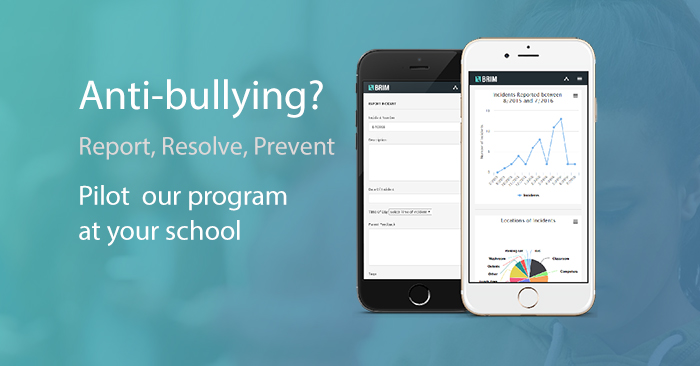School leaders, however swamped with their daily acts of heroism, have challenging and important problems to solve: bullying, teacher turnover, improving student performance, cultural and socio-economic differences to name a few. The list goes on and the challenge never ends. But it all starts with a positive school culture.
School specialists have found that a positive school culture helps take care of a considerable measure of those issues. A positive school culture fundamentally changes the way different components of a successful school work together to create change. Researchers find that it diminishes tardiness, suspensions, and behavioral issues in the classroom. A positive culture promotes scholarly accomplishment, an inspiration to learn, and mental achievement. Best of all, better school culture helps scholastic achievement flourish as a core foundation of security and safety in the minds of your students.
Creating a positive school atmosphere is very difficult to do, as any administrator will tell you. Individuals have psyches of their own, and you can’t make them feel accomplished and motivated externally – or just by telling them that you value them. They have to truly feel like they are part of something great – a school that yearns for success. A school that promotes positive action and rejects poor behaviors. It takes diligence, persistence and incredible determination to build a culture. But the strength of a culture is very hard to break. Just as its hard to break out of a bad culture, a good culture stands strong. The work you put into building a positive culture now will reap benefits for you and your community for years to come. Let’s begin with some concrete actions you can take to build a better culture!
How do you create a culture of positivity?
Stroll the campus of a positive school. Or in our digital age, scroll down the Twitter account of a top-performing school. You’ll immediately get a sense of the school climate by observation – as anthropologists have done for centuries. The best way to observe human behavior and how we as humans create culture is to observe it. Are students, teachers, parents, staff, and volunteers celebrated? Are they treating each other with respect? Is the school clean and orderly? Do posters line the classrooms and halls beaming positive messages? Are students engaged in their learning or do they sit sheepishly at their desks?
The National School Climate Council spelled out specific criteria for what defines a positive school climate:
- Norms, values, and expectations that support social, emotional, and physical safety.
- People are engaged and respected.
- Students, families, and educators work together to develop and live a shared school vision.
- Educators model and nurture attitudes that emphasize the benefits gained from learning.
- Each person contributes to the operations of the school and the care of the physical environment.
Rest easy in knowing there are tactical steps you can take right now to shape school culture. There is structure in these steps, but the rest is up to your personal style – that your community will hopefully come to appreciate.
Your 5 steps to building a positive culture
1. Staff Role Models
The old saying “monkey see, monkey” do stands true. At school, students learn by observation. Observing the actions of others influences how they respond. Children model what they see in their environment as a way of coping with unfamiliar situations. No matter what, all behavior is learned – good or bad. Your staff’s behavior communicates how students should behave, regardless of how students are told to behave. For example, research has shown that when a student is rejected by peers, a teacher’s reaction can reshape the situation. If the teacher models warm and friendly behavior to the isolated student, peers will become less likely to continue to isolate the peer. Students see the teacher modeling a friendly relationship and they mirror it. The opposite is also true. As school leaders, you have the power to set the tone.
2. Build Strong Relationships
At the end of the day staff-student relationships are at the core of the learning process. These relationships influence everything from how your staff feel supported and rewarded to how students learn and improve their performance. Since staff and students make up your school climate, you must focus on their relationships between each other. Research tells us that when students feel liked and respected by their teachers, they find more success in school, academically and behaviorally. On the other hand, weak interpersonal relationships breed lack of trust, insecurity, and fear which begin to define a negative school culture.
Strong relationships need to be a priority for the whole school. How do you do it? Teachers need to have time to talk to their students in and out of the classroom. Parents should be involved in the process too with clear two-way communication. Behavior at home influences behavior in the classroom. The goal should be for every adult in the building to maintain a high rate of positive interactions with students. Positive behaviors breed a positive culture.
3. Set Appropriate Consequences
Classroom and school-wide policies and procedures help define the framework to work within and bring more structure to your school. But naturally, students will push the limits and strong consequences must be part of your plan. Effective consequences link behaviors to good and bad consequences. In psychology, negative reinforcement involves removing a negative or unpleasant consequence. In this way we can strengthen positive behaviors because students will know clearly know the consequences. Remember, consequences need to be appropriate and clearly tied to behaviors. They should not be taken in a punitive light but rather as part of shaping behaviors. Students must understand why the consequences exist and why their behavior was wrong.
Your school may want to develop a clear consequences chart that ties unwanted behaviors to consequences. When picking consequences try to think beyond traditional consequences like a suspension or detention. For example, if a student is disrespectful to another student a traditional consequence might be an after-school detention. Instead, consider having the student write a letter to the other student apologizing for their behavior. The student will learn about why their behavior was wrong and practice their writing skills at the same time!
4. Reward Good Behavior
Love throwing parties? Elementary and middle school students might find a group lunch with the principal as an enticing reward for good behavior. Have teachers keep an eye out for good school citizens by tracking good behavior with tickets that the students can accumulate or that the teacher tracks individually. Then after a period of good behavior reward the top students for their good behavior by inviting them to lunch with you in your office! Here’s Round Meadow Elementary doing just that!
These Kinder students collected 10 tickets and get to have lunch with the principal. Great job colts! #lvusd #rmcolts pic.twitter.com/tLBLzifUvI
— Round Meadow Elem. (@RoundMeadowElem) February 23, 2017
5. Track and Measure Positivity
For a climate and culture initiative to be successful, educators need to establish metrics that define success. In addition, educators need a system for capturing data that will enable them to monitor their progress toward those goals. Such a system will ensure a consistency in how teachers capture evidence of the behavior-based interactions
they have with students across classrooms. That consistency helps administrators truly understand to what extent progress is being made and enables them to better support teachers’ needs.
Most of all, listen and engage
Feedback is hugely underrated and yet its key to building culture. Ask your teachers what they like about working at your school, what they hate about it, and what they would do differently if they were in your position. Focusing on their needs creates a positive culture because they know that they’re valued. Consider sharing your school or district’s goals and challenges —good and bad—with your community. Open lines of communication create a culture of openness in your community. Keep communication open by sending letters to parents, on paper letters or digital flyers, and hosting feedback sessions where parents can come and voice their opinions. Always make yourself available to hear feedback. Everyone is involved in the success in your school or district, and it’s up to you to lead that involvement. Changing a culture takes time, patience, and serious dedication. But as with most difficult things, it’s worth doing!



